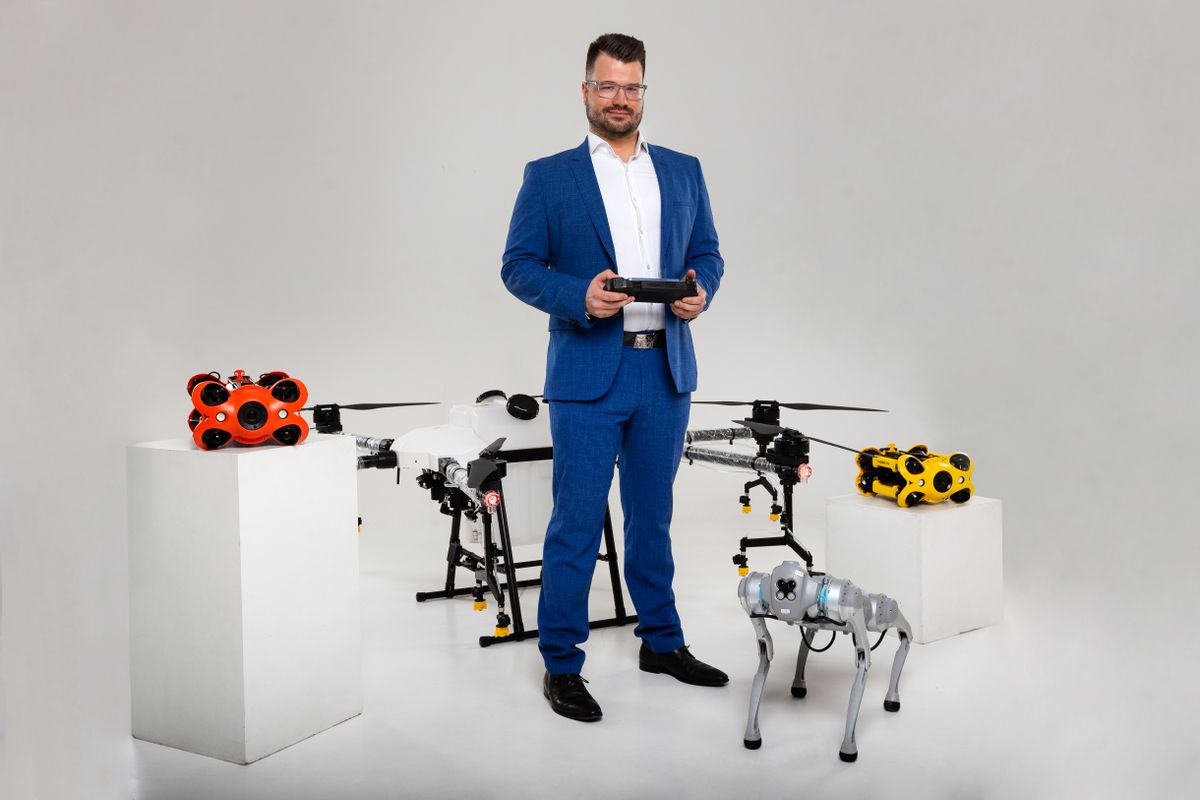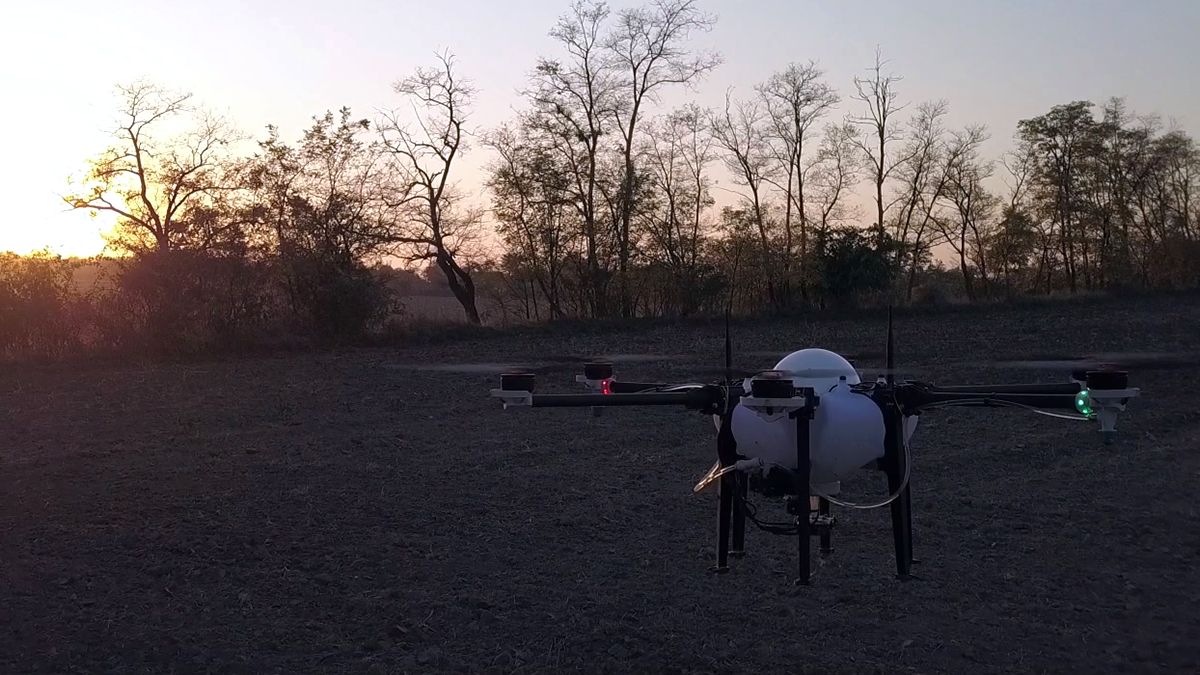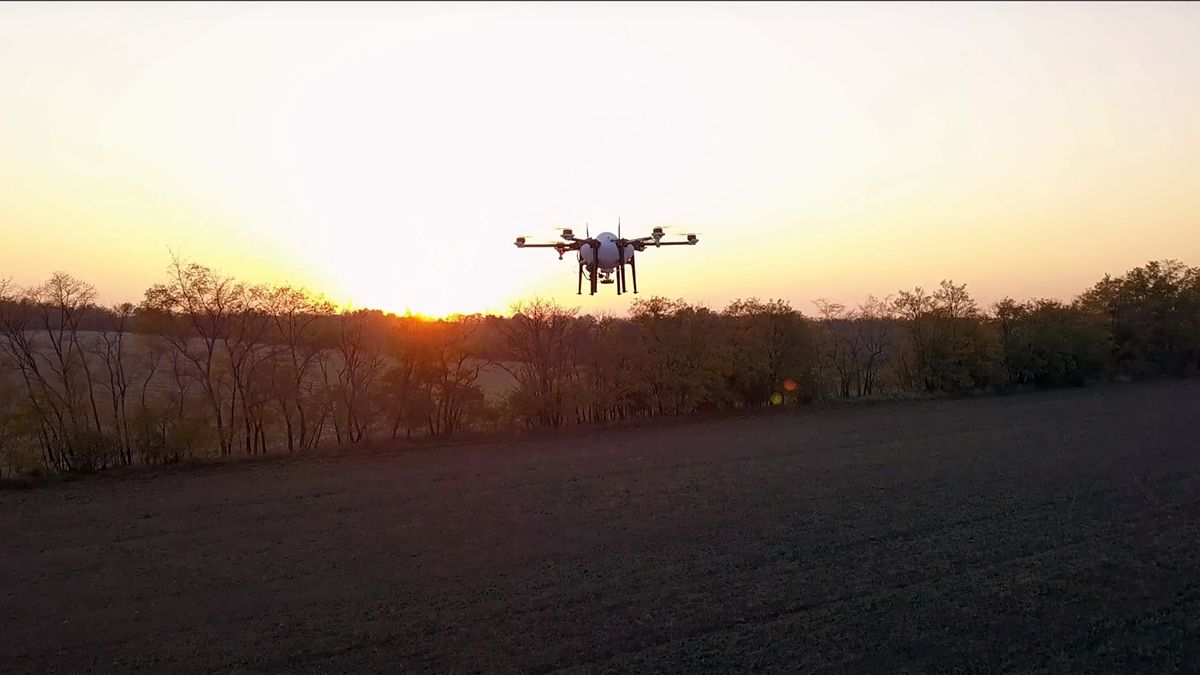

How many drones are there in our country right now?
I can’t give you an exact number, because the drone as a concept is quite a complex category. They range from handheld toys worth a few thousand forints, agricultural spraying drones to unmanned aircraft carrying out military tasks. For sure,
How widespread is the use of industrial drones in Hungary and in which sectors are they used the most?
For business purposes, many companies employ drones in the country, and these goals are also extremely diverse. Their most common use is related to imaging, in addition to traditional photography and video, certain tools and software are also suitable for tasks such as thermal imaging, mapping surveys or 3D modelling of buildings or larger areas.
How big is the market for agricultural drones in Hungary?
There are many areas of Hungarian agriculture where the use of spray drones is a vital issue. Let’s think of the fact that in the late spring and early summer, due to the mud, tractors can not enter the area for weeks, or at the end of summer, plants that are overgrown in their height are no longer able to treat with a ground sprayer without damage.
By the way, the regulation of the field began last year: first the spray drones deemed suitable, including the TTA brand products marketed by Clue Drone, received type certification, then a few months later the necessary criteria for pilot training arrived and the first training institutions appeared. Finally, the last loose end of the regulation was the authorisation of spreadable chemicals, the number of which we expect to expand rapidly over the coming weeks and months, and we hope that by next spring all types of pesticides will be allowed for drones.

How interested are Hungarian farmers in technology?
As one of the first players on the Hungarian market, we are experiencing significant interest from Hungarian farmers, as drone spraying is very effective, affordable and uses up to 90 percent less water than ground spraying, moreover, it can be used on wet, loose soil without any tread damage. A 30-litre spray drone can handle up to 2.5 hectares in 11-12 minutes in fully automatic mode, so there are no complaints about the capacity.
Has this method been used abroad for a long time?
Sprayer drones have been used in Asia for a relatively long time, for example TTA type drones sold by our company have been on the market for 15 years with capacities between 5 and 30 liters. The development of the technology is also linked to terraced farms that are difficult to access and can only be managed manually with ground technologies with a back sprayer, which are present in Asia in a large area.
What are the advantages of a spraying drone over conventional – manual, tractor – solutions?
In addition to the obvious advantages of not causing tread damage, they operate automatically and are able to work even when all other earthly devices get stuck in the mud, their efficiency is also outstanding. Drones fly with relatively dense substances, so they treat the areas with less water, but because they form small droplets and the air flow generated by the propellers mixes the substance into the air, pushes it downwards and reaches the color and back of the leaves, it provides outstanding coverage even in this density.

Use of the device must be notified 30 days in advance. Does that apply to agricultural drones?
Because spray drones fly relatively low – just 2-4 meters above plants, they do not interfere with air traffic, and they work outside populated areas, so they do not endanger the population. The practice is still at the boiling stage, but it can be said that in agriculture a lot of factors can influence when to work, which is incompatible with the 30-day notification. However, before flying, you must of course report your flight in the MyDroneSpace application, which guarantees safe work.
What is the current legal framework?
The control of the spray drones can be divided into 3 main parts: the first and at the same time the simplest part concerns the machines. The authorities will examine the operation and characteristics of the drones and, if they are suitable for the work, will classify the type. TTA drones were among the first to receive type certification in Hungary. This task
Currently, a package of several training needs to be carried out for those who want to fly with a spray drone.
In addition to the A1/A3 and A2 examinations generally required for drone operations, training as air traffic controllers for special drone operations and unmanned aircraft is required. Once we’re done with these, you’ll need to enroll in government-accredited plant protection drone pilot training.
The third area is chemicals, in which we are living in the days of the breakthrough, as the authorization of the first insecticide has arrived, so Mospilan can be officially deployed from a drone, and in the coming weeks and months we expect to be allowed more drugs. Previously, however, plant protection products could be applied on an experimental and necessity basis, but there were no such restrictions for liquid nutrients.
What are the costs of operating a drone?
Of course, there is a need for a drone, of which the cheapest category is currently the 5-litre drone, starting from a net amount of around 2 million HUF, for a 10-litre drone about 4 million HUF and for a 30-litre device about 7 million HUF net. In addition, it is necessary to complete the courses and trainings, which is an additional HUF 1.5-2 million depending on the provider, as well as a suitable car, trailer, aggregate, mixer, protective equipment, tools and other small things. All in all, it’s worth a minimum net investment of €10 million for those who want to provide services – a 10-litre drone and around €20 million for those who want to work with a 30-litre device, as here you’ll need bigger from all other devices.
How do you see the future of the sector in Hungary?
I believe that the prices mentioned above may seem a lot if we look at the device as “just” drones, but,
For more information please contact Sarah, xuesong.bao@ttaviation.com